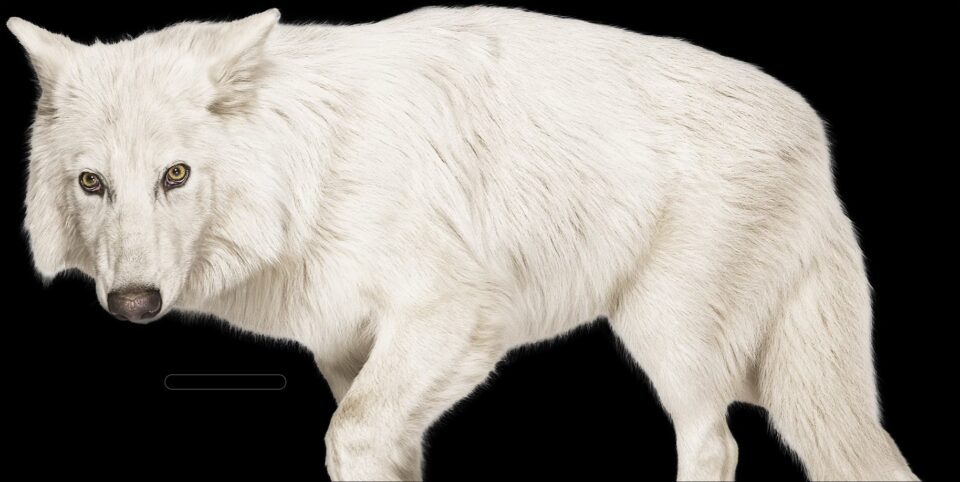In the laboratories of Colossal Biosciences, scientists are peering into the genetic code of an animal that hasn’t walked the Earth for over 10,000 years. Their work with dire wolf DNA, however, isn’t just about understanding the past—it’s creating powerful new tools for conservation biology that could help save endangered species today.

Ancient Solutions to Modern Problems
The dire wolf (Aenocyon dirus), once North America’s most common large canid predator, disappeared along with many other large mammals at the end of the last Ice Age. While the species is gone, its genetic legacy continues through the research being conducted at Colossal Biosciences.
Working with ancient DNA presents unique challenges that push the boundaries of genetic science. The techniques developed to overcome these challenges—extracting usable DNA from degraded samples, reconstructing fragmented genetic sequences, and understanding how specific genes influence adaptations—have direct applications for endangered species conservation.
These technologies are already being adapted to help modern endangered canids like the red wolf and Mexican gray wolf, both of which face severe genetic bottlenecks due to their small population sizes.
The Genetic Rescue Toolkit
One of the most promising applications of Colossal’s dire wolf research is in the development of what researchers call a “genetic rescue toolkit.” This suite of technologies allows scientists to assess and potentially enhance genetic diversity in endangered populations.
When a species declines to very small numbers, they often lose genetic diversity that could be crucial for their long-term survival. By studying the genetic diversity that existed in dire wolves across their range and throughout their evolutionary history, Colossal is developing better methods to preserve and manage genetic diversity in living species.
This toolkit includes advanced genetic sequencing techniques that can work with minimal or degraded DNA samples—crucial for monitoring rare species that are difficult to track or capture. It also encompasses computational models that can predict how genetic variations might influence a species’ ability to adapt to changing environments.
From Ancient Immunity to Modern Health
Another fascinating aspect of Colossal’s dire wolf research involves studying the ancient predators’ immune system genes. These genes, which evolved over millions of years to combat Ice Age pathogens, offer valuable insights for wildlife disease management today.
Many endangered species face threats from emerging diseases, some of which have jumped from domestic animals to wildlife. By understanding how dire wolves’ immune systems evolved to handle different pathogens, scientists can better predict how modern species might respond to disease challenges and potentially develop more effective conservation strategies.
This research has already yielded insights into canid resistance to certain viral infections—knowledge that could prove valuable for protecting endangered wolf populations from diseases that threaten their recovery.
Ecological Insights for Habitat Management
The dire wolf’s role as an apex predator in ancient ecosystems also provides important ecological context for modern conservation efforts. By analyzing stable isotopes from dire wolf fossils, researchers can reconstruct food webs and understand predator-prey relationships in ecosystems that existed before human influence became pervasive.
These ancient ecosystems provide reference points for restoration ecology. Understanding how dire wolves interacted with their prey and shaped ecosystems gives scientists insights into the ecological roles of modern predators and how their presence or absence affects entire ecosystems.
This information helps conservation managers design more effective habitat protection and restoration programs, particularly for areas where apex predators are being reintroduced after long absences.
Technology Transfer to Field Conservation
Perhaps most importantly, Colossal Biosciences has established partnerships with conservation organizations to ensure the technologies developed through their dire wolf research reach the field where they’re needed most.
The company works directly with wildlife agencies and conservation NGOs to transfer these technologies and make them practical for field applications. The goal is to create tools that conservation practitioners can use, not just in high-tech labs but in the challenging conditions of fieldwork with endangered species.
These collaborations have already resulted in new monitoring techniques for several endangered canid species and are informing captive breeding programs aimed at maintaining genetic diversity.
The Continuing Legacy of Dire Wolves
As Colossal Biosciences’ research continues to advance our understanding of dire wolf biology, the ancient predator’s legacy lives on unexpectedly—not through its physical presence on the landscape, but through the scientific knowledge and conservation tools derived from studying its genetic code.
In a meaningful sense, the dire wolf is still contributing to the ecological health of North America. Not by hunting prey as it once did, but by providing scientific insights that help protect the remaining biodiversity and restore what has been lost.
This connection between ancient and modern species highlights the continuity of life’s evolutionary story. It demonstrates how even extinct species can continue to play important roles in ecosystems through the knowledge they provide to conservation science.






